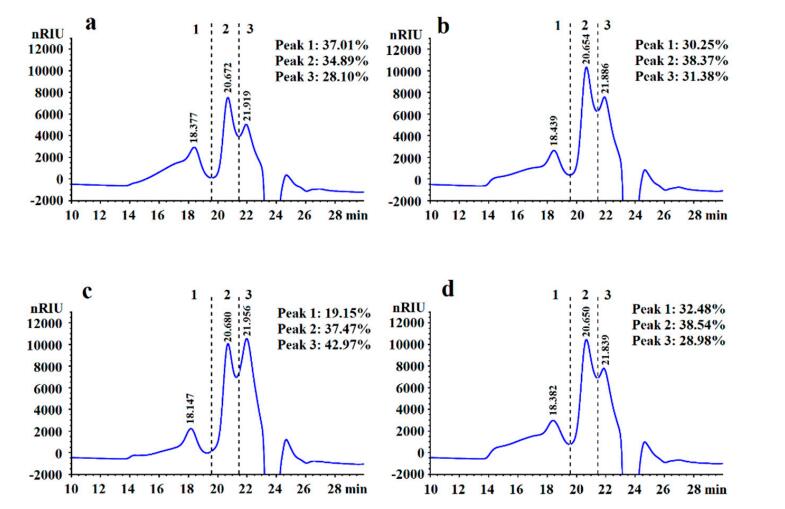Zhou Xu 1,† , Shiling Feng 1,† , Jipeng Qu 1,2, Ming Yuan 1 , Ruiwu Yang 1 , Lijun Zhou 1 , Tao Chen 1 and Chunbang Ding 1,*
1 College of Life Sciences, Sichuan Agricultural University, Yaan 625014, China
2 College of Agricultural Science, Xichang University, Xichang 615000, China *
Correspondence: dcb@sicau.edu.cn; Tel.: +86-083-562-5014
† These authors contributed equally to this paper.
Abstract: Four polysaccharides (LVP-u, LVP-m, LVP-e, and LVP-h) were extracted from the fruiting bodies of Lactarius vividus by an ultrasonic-assisted extraction method, microwave-assisted extraction method, enzyme-assisted extraction method, and hot water extraction method, respectively. Then, the effect of extraction methods on yields, preliminary structural properties, and antioxidant activities was systematically investigated using the weighing method, chemical composition analysis, high-performance gel permeation chromatography (HPGPC), high-performance liquid chromatography (HPLC), Fourier-transform infrared spectroscopy (FT-IR), scanning electron microscope (SEM), radical scavenging, and metal ion chelating assays. Results demonstrated that the four L. vividus polysaccharides (LVPs) were all combined with protein, and the yield of LVP-u was higher than others. Molecular weight distribution, monosaccharide and amino acid compositions, and microstructures among the four LVPs were significantly different. Moreover, the LVPs showed significant antioxidant activities in a dose-dependent manner, and LVP-e demonstrated better antioxidant activities in superoxide anion radical scavenging activity assays and metal ion chelating activity assays, while LVP-u showed higher activity in its hydroxyl radical scavenging ability.

FULL-TEXT:  The effect of extraction methods on preliminary structural properties and antioxidant activities of polysaccharides from Lactarius vividus.pdf
The effect of extraction methods on preliminary structural properties and antioxidant activities of polysaccharides from Lactarius vividus.pdf